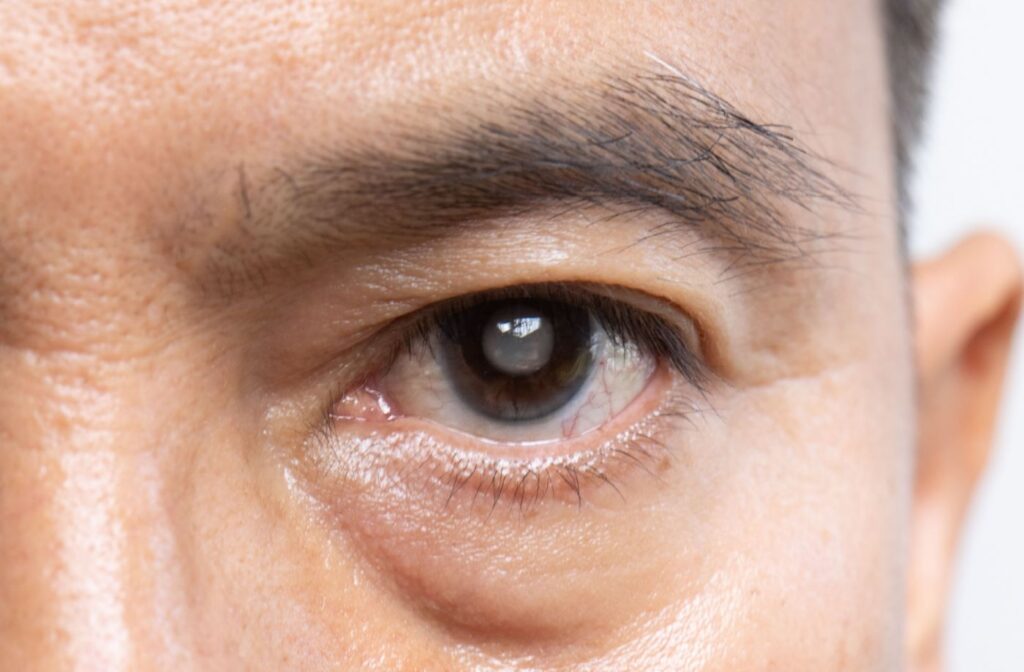Health Conditions
Unraveling the Symptoms of Cataracts and Glaucoma
Imagine a world where your vision slowly fades away, and the vibrant colors and sharp focus of everyday life become a distant memory. This is the reality for millions of people suffering from cataracts and glaucoma and knowing the symptoms of these eye conditions is crucial for early detection and treatment.
Cataracts cause a clouding of the lens inside the eye, resulting in blurry vision, sensitivity to light, and difficulty seeing at night. On the other hand, glaucoma is often referred to as the “silent thief of sight” because it typically doesn’t cause noticeable symptoms until it has progressed significantly. However, increased pressure in the eye, eye pain, and peripheral vision loss may occur in advanced stages.
By understanding the symptoms of cataracts and glaucoma, you can proactively seek medical attention, potentially preserving your eyesight and maintaining your quality of life. In this article, we will delve deeper into the signs and symptoms of these conditions, enabling you to take the necessary steps to protect your vision.

Understanding Cataracts: Causes, Symptoms, and Risk Factors
Cataracts are a common eye condition that affects millions of people worldwide. The lens inside the eye becomes cloudy, leading to vision problems. There are several causes of cataracts, including aging, exposure to UV radiation, diabetes, smoking, and certain medications such as corticosteroids.
The symptoms of cataracts often develop slowly over time. Initially, you may notice that your vision becomes blurry, like looking through a foggy window. You may also experience increased sensitivity to light, making it uncomfortable to be in bright environments.
Additionally, cataracts can cause difficulties with night vision, making it challenging to drive or see clearly in low light conditions. If left untreated, cataracts can significantly impact your quality of life.
There are different types of cataracts, including nuclear cataracts, cortical cataracts, and subcapsular cataracts. Nuclear cataracts develop in the center of the lens and are commonly associated with aging. Cortical cataracts form in the outer edges of the lens, and subcapsular cataracts occur at the back of the lens. Each type may have slightly different symptoms and progression rates.
If you suspect you have cataracts, it is important to seek medical attention from an ophthalmologist. They will perform various tests and examinations to diagnose the condition accurately. These may include a visual acuity test, a slit-lamp examination, and a dilated eye exam. Early detection is key to managing cataracts effectively.
Treatment Options for Cataracts
Fortunately, cataracts can be treated with surgery. Cataract surgery involves removing the cloudy lens and replacing it with an artificial lens called an intraocular lens (IOL). The surgery is typically performed on an outpatient basis and has a high success rate. The choice of IOL depends on various factors, including your specific needs and lifestyle. Your ophthalmologist will discuss the available options and help you make an informed decision.
In addition to surgery, there are some non-surgical methods that may help manage cataracts in the early stages. These include using prescription eyeglasses to improve vision, increasing lighting in your environment, and avoiding smoking and excessive exposure to UV radiation.
However, these methods can only provide temporary relief and will not cure cataracts. Regular eye exams are essential to monitor the progression of the condition and determine the appropriate time for surgery.

Understanding Glaucoma: Causes, Symptoms, and Risk Factors
Glaucoma is a group of eye diseases that damage the optic nerve, leading to vision loss and potentially blindness. It is often caused by increased pressure in the eye, known as intraocular pressure. However, it can also occur due to poor blood flow to the optic nerve or other factors.
The symptoms of glaucoma can vary depending on the type and stage of the disease. In the early stages, most people do not experience any noticeable symptoms, which is why it is often called the “silent thief of sight.” As the condition progresses, you may start to notice peripheral vision loss, commonly described as “tunnel vision.”
This means that you can see objects directly in front of you but have difficulty seeing to the sides. Additionally, glaucoma can cause eye pain, redness, blurred vision, and halos around lights.
There are different types of glaucoma, including primary open-angle glaucoma, angle-closure glaucoma, and normal-tension glaucoma. Primary open-angle glaucoma is the most common type and develops slowly over time.
Angle-closure glaucoma is a sudden and severe form of glaucoma that requires immediate medical attention. Normal-tension glaucoma occurs even with normal intraocular pressure levels. Each type requires different management strategies and medications.
To diagnose glaucoma, your ophthalmologist may perform various tests and examinations. These can include measuring your intraocular pressure, examining the optic nerve, assessing your visual field, and using imaging tests such as optical coherence tomography (OCT). Early detection and treatment are crucial to prevent further vision loss and manage the condition effectively.

Treatment Options for Glaucoma
The goal of glaucoma treatment is to reduce intraocular pressure and prevent further damage to the optic nerve. The most common treatment options include eye drops, oral medications, laser therapy, and surgery. Eye drops are typically the first line of treatment and work by either reducing the production of fluid in the eye or increasing its drainage.
Oral medications may be prescribed if eye drops alone are not sufficient. Laser therapy, such as selective laser trabeculoplasty (SLT) and trabeculotomy, can help improve the drainage of fluid from the eye. In severe cases or when other treatments fail, surgery may be recommended to create a new drainage pathway or implant a drainage device.
It is important to note that while treatment can help manage glaucoma and prevent further vision loss, it cannot restore vision that has already been lost. This is why early detection and regular eye exams are crucial. By monitoring your intraocular pressure and the health of your optic nerve, your ophthalmologist can adjust your treatment plan as needed to maintain the best possible vision.
Conclusion
In conclusion, cataracts and glaucoma can significantly impact your vision and quality of life and understanding the symptoms and risk factors associated with these conditions is essential for early detection and treatment. Regular eye exams are crucial, especially as you age or if you have other risk factors such as diabetes or a family history of these conditions.
To protect your vision and reduce the risk of developing cataracts and glaucoma, there are several preventive measures you can take. These include wearing sunglasses with UV protection, maintaining a healthy lifestyle, eating a balanced diet rich in antioxidants, quitting smoking, and managing chronic health conditions such as diabetes and high blood pressure. Additionally, it is important to follow your doctor’s recommendations for regular eye exams and screenings.
Remember, your eyes are precious, and taking care of them should be a top priority. By being proactive and knowledgeable about the symptoms of cataracts and glaucoma, you can take the necessary steps to preserve your vision and enjoy a lifetime of clear sight.
Trusted Health, Wellness, and Medical advice for your well-being



